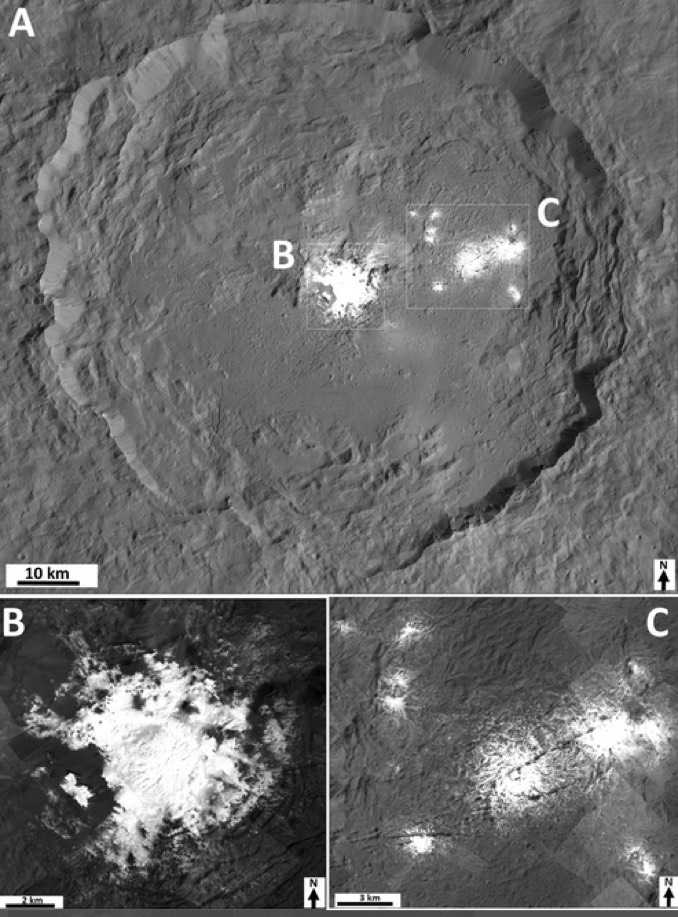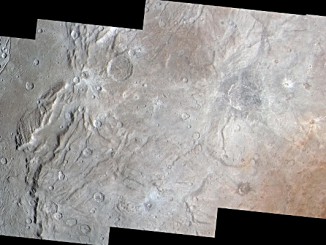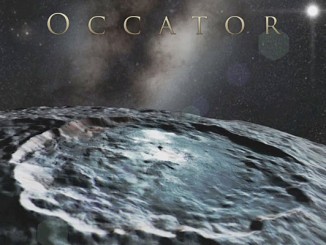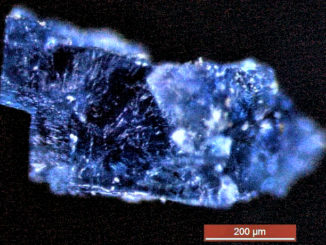
Close examination of data and imagery collected during NASA’s Dawn mission indicates the dwarf planet Ceres, the largest body in the asteroid belt, was geologically active with a unique form of cryovolcanism in the relatively recent past, researchers report in papers published by Nature Astronomy, Nature Geoscience and Nature Communications.
The research contradicts the long-held idea that small bodies, in the absence of heat-generating gravitational stresses, are not geologically active. To the contrary, Ceres may still be active today.
The conclusions are based on a detailed study of Occator Crater, a 92-kilometre-wide (57-mile-wide) impact structure that was blasted out some 22 million years ago. Occator generated widespread attention during Dawn’s approach to Ceres when long-range images showed two unusually bright, white features in the crater.
Based on high-resolution, close-range images captured later in Dawn’s mission, the researchers were able to characterise “a very complex structure with elevations, a large central depression, deposits, cracks and furrows,” said Andreas Nathues of the Max Plank Society and principal investigator of Dawn’s camera team.
“In all its details, this became clear only during the final phase of the mission,” he added. “From the crater’s current morphology, we can reconstruct its evolution and thus take a look at Ceres’ eventful past.”
And an eventful past it was.
Occator Crater initially had a central peak that eventually collapsed. About 7.5 million years ago, brine erupted to the surface amid the remnants of that peak. The water quickly evaporated and left behind bright carbonate deposits. The central region of the crater then subsided.

In the few million years that followed, brine again rose to the surface through cracks and furrows, leaving additional deposits near the eastern edge of the crater. Then, about two million years ago, more brine rose to the surface in the central depression, forming a dome of bright material.
The researchers identified two primary pathways for liquid to reach the surface. For the large deposit at the center of Occator, known as Cerealia Facula, “the bulk of the salts were supplied from a slushy area just beneath the surface that was melted by the heat of the impact that formed the crater,” said Carol Raymond, Dawn principal investigator at NASA’s Jet Propulsion Laboratory.
The impact also ripped large fractures that could reach a deep, long-lived reservoir of salty water, “allowing brine to continue percolating to the surface,” she said.
The conclusions are supported by gravity measurements indicating a reservoir of liquid brine about 40 kilometres (25 miles) below the surface. Based on those and other data, “we assume that Ceres is still occasionally cryovolcanically active,” Nathues said.



